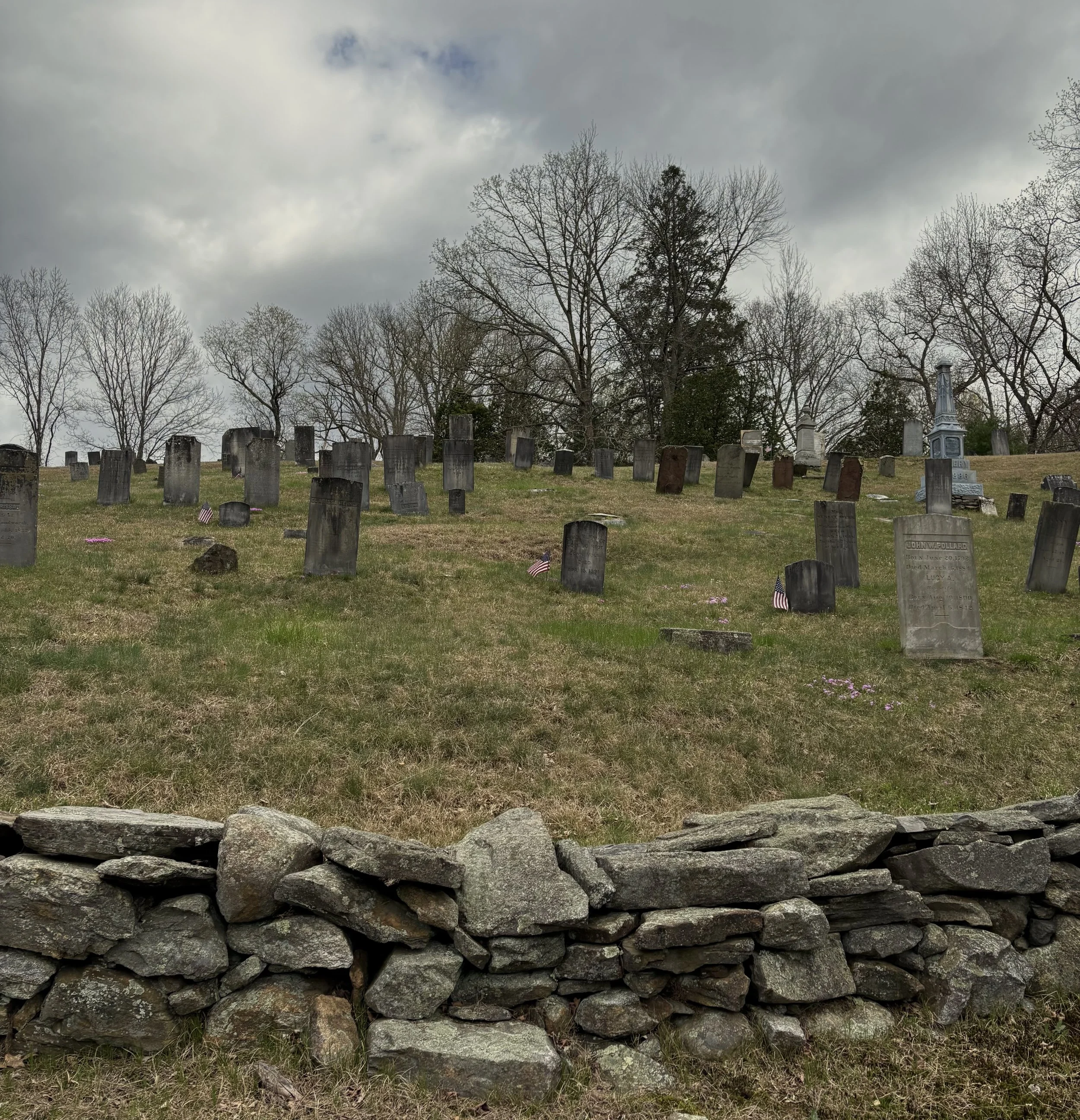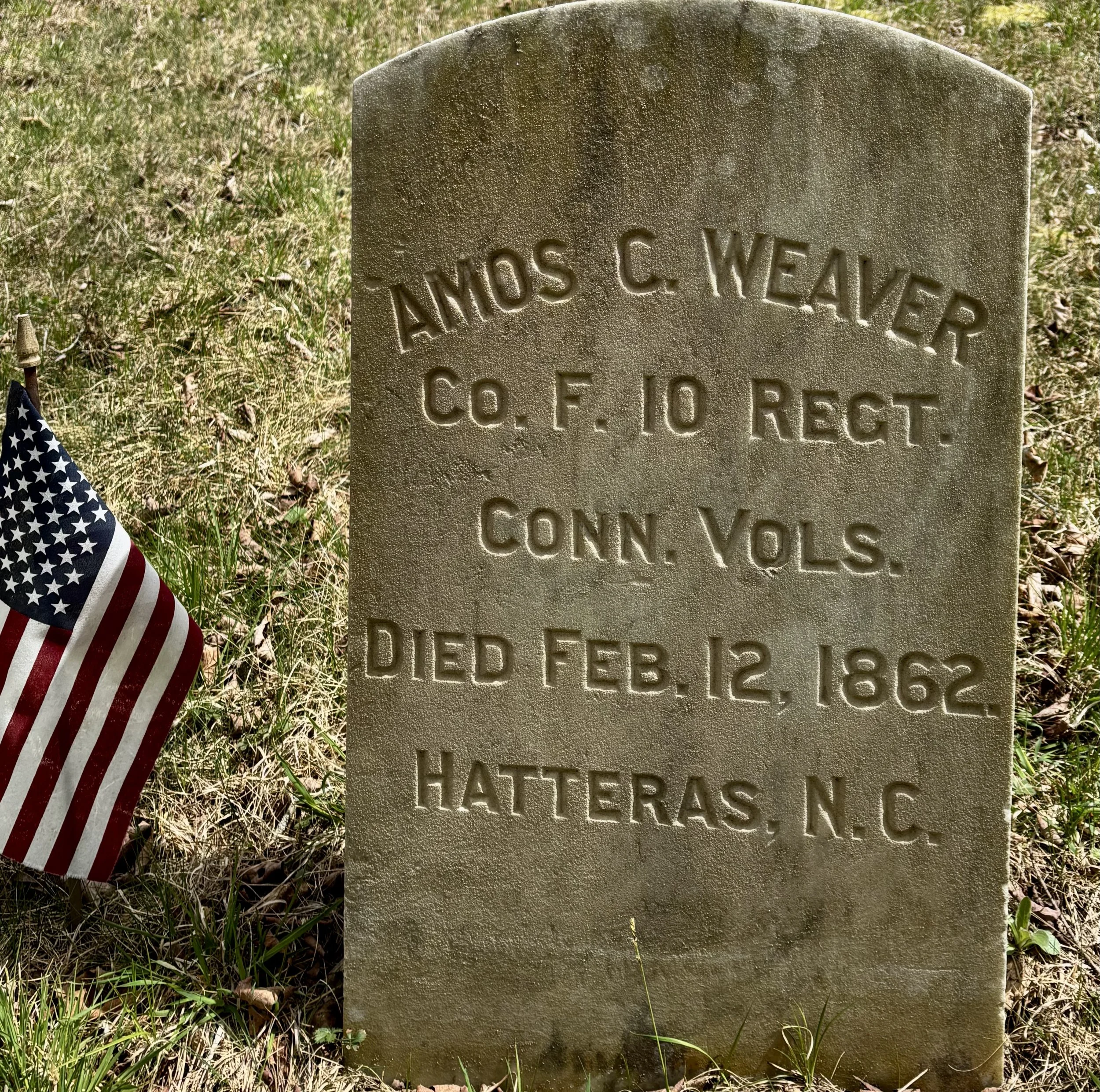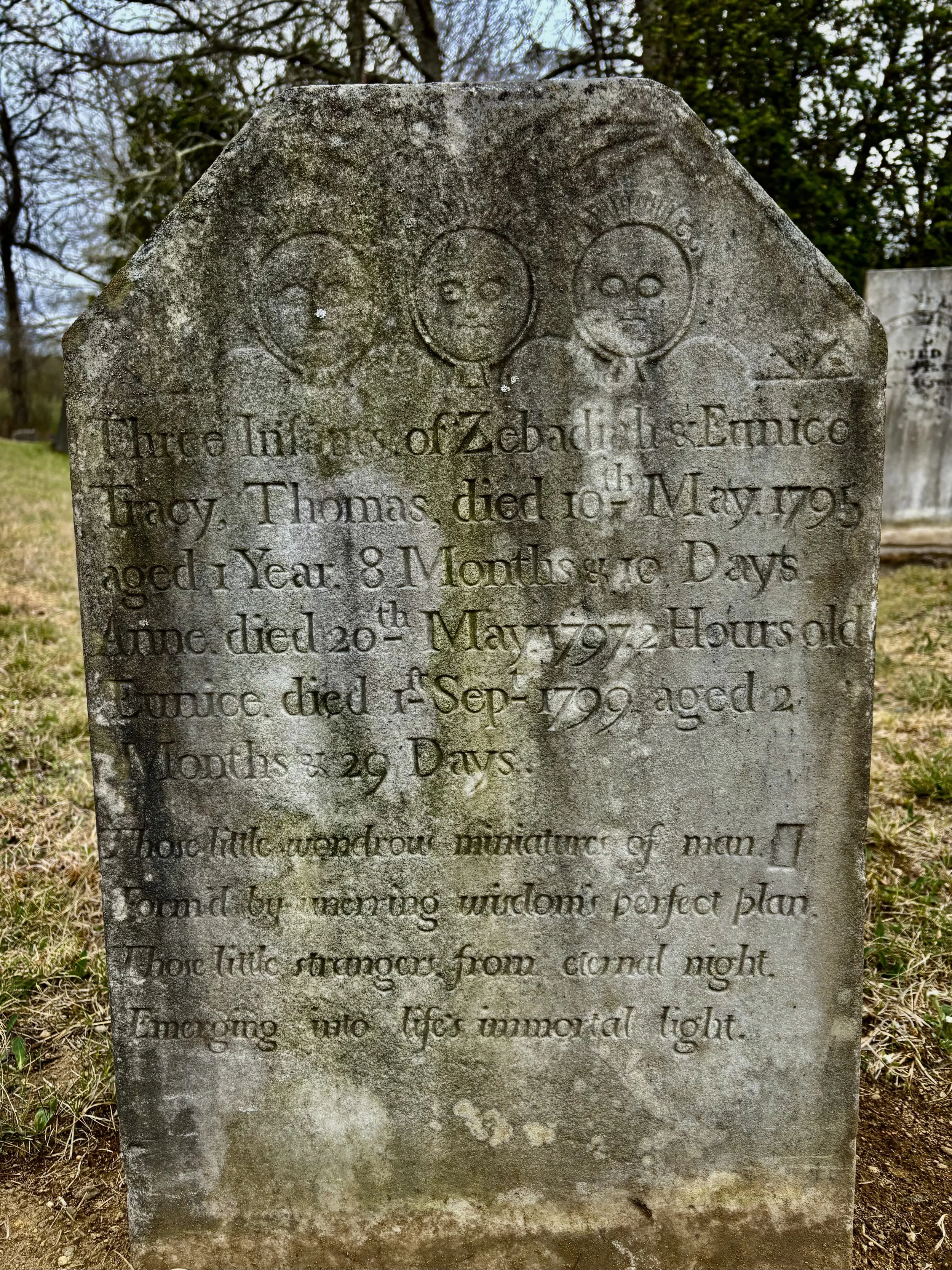Old Scotland Cemetery North
Scotland, a small town in northeastern Connecticut was terra incognita until Carolyn and
I discovered it on a recent Sunday drive. Perhaps not the Edenic remembrance of first settler
Isaac Magoon’s native Caledonia, but some time spent in the Windham County farming
community revealed a modest treasure. Set amongst some of the most bucolic topography of
New England, with rolling hills, working farms, and an exceptional array of Cape Cod cottages,
as well as Colonial and Greek Revival domestic architecture. The highlight of this gentle
landscape was the steep hillside burial ground that contains two centuries of the town’s dead.
Old Scotland Cemetery North on Devotion Road. (There is a newer cemetery half a mile south.)
One stone from the late 18 th century is identified as a cenotaph, that is, a marker for
someone who’s body is buried elsewhere, in the this case, the Caribbean Island of St. Lucia.
Scotland may have been isolated, but it was not provincial. There are three standard Civil War
graves stones, but surely these, too, lack the physical remains of the young men they
memorialize.
During the first half of 1862, Union General (and Rhode Islander) Ambrose Burnside, employing New England regiments,
attempted to shut down blockade-running operations along the Outer Banks. Amos Weaver was
presumably wounded in the Battle for Roanoke Island, dying of his wounds five days later.England regiments,
attempted to shut down blockade-running operations along the Outer Banks. Amos Weaver was
presumably wounded in the Battle for Roanoke Island, dying of his wounds five days later.
The government-issue marble stones are the exception in Old Scotland. Most of the dead
here lie beneath sandstone, a rarity when one recalls the typical slate steles of 18 th -century New
England. Scotland had more than one artisanal stone carver. Joseph Manning and his sons
Rockwell and Frederick contributed tombstones to the area for over six decades. It was John
Walden, however, who provided Scotland with unique round faces.
Thomas, aged 1 year and 8 months, Anne lived but 2 hours, and Eunice expired at less than 3 months,
1795-99.
Those little wondrous miniatures of man.
Form’d by unerring wisdom of perfect plan.
Those little strangers from eternal night.
Emerging from life’s immortal light.
Mother of Thomas, Anna, and Eunice, 1805. Walden’s signature circular visage is almost subsumed by a
weeping tree,
illuminated by a ghost-liked lamp. Note the stylized wings of the departed.
“Mrs Bethiah, Consort to Capt Saml Morgan. Departed this Life Feb. 2d 1800, in the 61 st Year of
her age.
Left numerous offspring to Lament their loss.” Walden’s angel wings roll around the semicircle as
decorative curtains.
Lydia Ripley was 79 when she departed this life in 1784. Primitive, unsophisticated, but
powerful.
Providence-based writer and photographer, William Morgan, has written extensively about New
England architecture and art, townscape and landscape. His latest book is The Cape Cod Cottage


